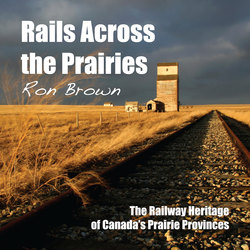Читать книгу Rails Across the Prairies - Ron Brown - Страница 4
На сайте Литреса книга снята с продажи.
Introduction
ОглавлениеThere is no other part of our country that has been so utterly dependent upon the railway for its development than Canada’s prairie provinces. Most of the towns and villages in eastern Canada were there long before the rails arrived, in some cases more than a century before. While the arrival of the railways may have helped shape the growth of these towns and villages, those in the Prairies owed their very existence to it.
The railways determined where the towns would go and how they would look. Railway planners laid out the streets and decided how each area would be used. Architects like R.B. Pratt, the Maxwell brothers, and Edward Colonna created stations that were often elegant — even grand — but in almost every case dominated the urban landscape. Railways were the lifeblood of nearly every town and village, with grain shipping forming the basis of the towns’ economies. Divisional points established by the railways for their yards, engine maintenance, and crew layovers led to large towns, while major terminals created the prairie’s largest cities.
Prairie residents who care about their local heritage must look to the railway and recognize, preserve, and celebrate its vestiges: the stations, the grain elevators, the water towers, the massive bridges, and the hotels. Regrettably, local indifference and even hostility to these reminders has trumped the efforts of those who cherish and attempt to save them.
This book is an attempt to bring attention to the few survivors of that heritage. Many bridges yet loom high about the wide prairie valleys; stations have been lovingly restored and converted to new uses, often museums. Grain elevators have become interpretive centres, and a handful of water towers yet remain; even a few of the many prairie ghost towns proudly proclaim their status. Railway museums have assembled large collections of the coaches and engines that brought the daily arrivals to the settlements. Steam excursions relive the sights and sounds and experiences of those historic times, although VIA Rail Canada remains the only living descendant of that legacy.
There are challenges, still. The demise of the Wheat Board threatens short lines, the few villages which yet depend upon their local grain elevators, and even the livelihoods of farmers themselves. Local attitudes may doom still more historic structures. Arson has cost the Prairies its most historic grain elevator, in Fleming, Saskatchewan, and a water tower in Glenborough, Manitoba. Yet, the desire to preserve and celebrate the history of a region that the railways largely created is growing. This book hopefully will be part of that celebration.
